- Artifact: an object that has been created or modified by humans
- Ceramics: containers or parts of containers that have been made of clay and hardened with heat; pottery
- Context: the place in the soil where an artifact was found, including the soil type and depth
- Debitage: the debris created when one stone is hit with another stone
- Feature: something that has been created by humans but doesn’t fit in a plastic bag; usually indicated by changes in soil color
- Fire-cracked rocks: rocks that have been modified by fire; they have often been part of a hearth at some point
- Flint knapping: the process of shaping stones into stone tools; this process creates debitage
- Lithics: rocks or parts of rocks
- Midden: a trash pile, often for domestic waste
- Sherd: part of a ceramic container
- Surface treatment: the pattern on the outside of a ceramic container, often identified by the material that was used to create the pattern (ex. Fabric, net, or cord)
- Post mold: areas of differently-colored soil that indicate where a post used to be located
- Projectile point: a weapon often made of quartz or quartzite; these points were sometimes attached to the heads of arrows but could also be attached to spears.
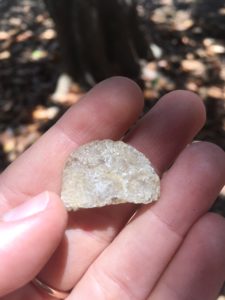
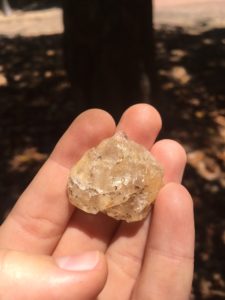
Examples of quartz
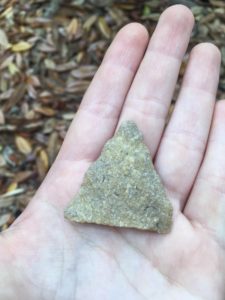
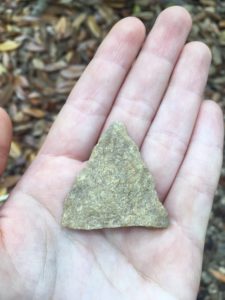
A projectile point made of quartz
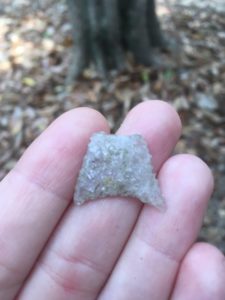
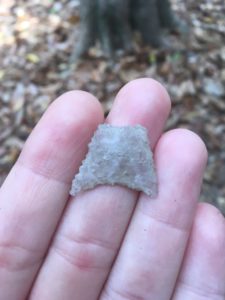
This projectile point is also made of quartz; based on its shape, we identified it as a type of point called a Yadkin point.

Fire-cracked rock
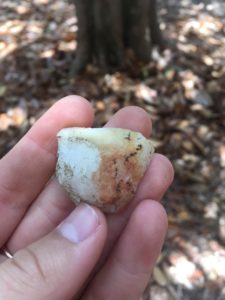
Fire-cracked quartz